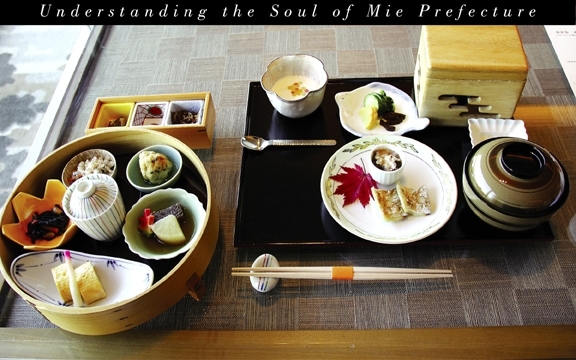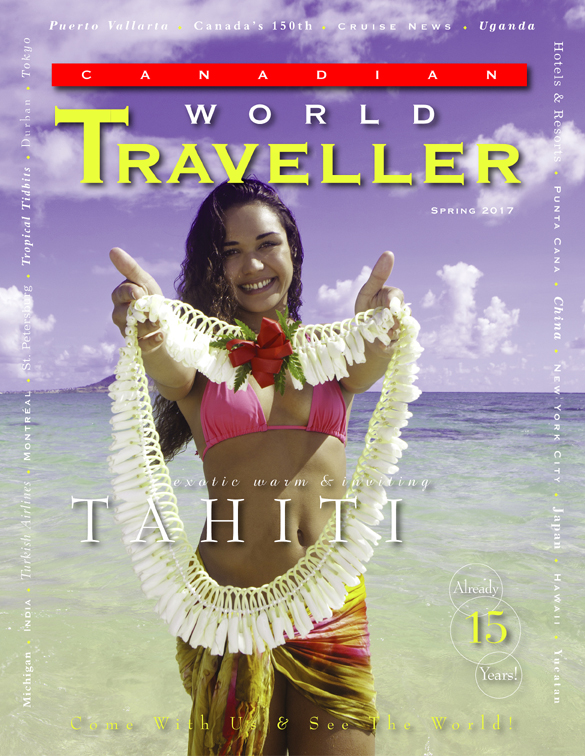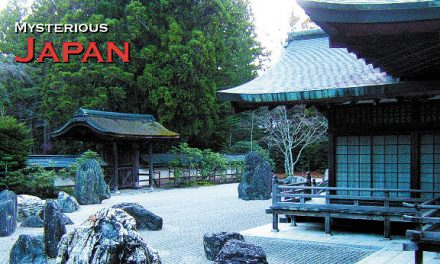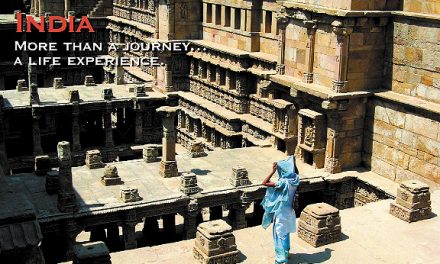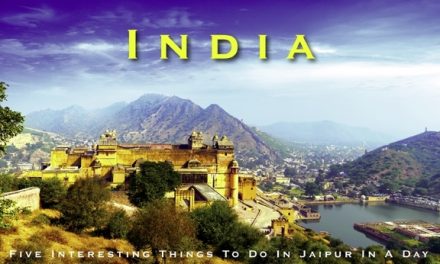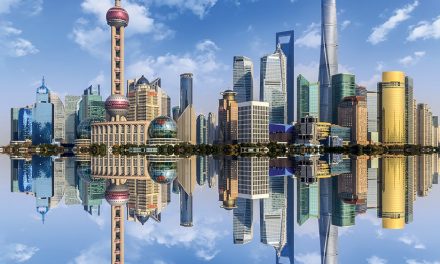Japan
Understanding the Soul of Mie Prefecture
Article & Photography by Steve Gillick

Yukiaki Tenpaku has an excited glimmer in his eyes when he picks up, what appears to be a charred piece of wood, from a tray in his dark factory-showroom. In fact it’s a Bonito, related to Skipjack Tuna, that’s been recently cured and it’s about to change our lives!
Tenpaku-san (‘san’ is an honourific used to address people) has been operating Maruten, a Bonito flake factory in the town of Daiohzaki in Mie Prefecture for the past 30 years. It’s no wonder that he believes that Bonito flakes are a prime source of ‘Umami’, a term that refers not only to the ‘savoury’ taste of food but also includes such aspects as visual appeal and long-term health benefits. He tells us that Umami is in the DNA, the genetic make-up, of the Japanese people, especially those who live in Mie Prefecture, where an appreciation of nature goes hand-in-hand with the incomparable taste of fresh ocean-caught seafood.
In one of those singular travel experiences that connect the visitor with the destination, we gathered around Tenpaku-san in that darkened room while thick, almost choking vapours from the smoker filled the air. He explained how Bonito flakes were made, and then demonstrated by using an instrument that looked very similar to a wood-working plane. At that point we are invited to taste fried rice infused with fresh, savoury Bonito flakes. It was an incredibly delicious, effective and invigorating way of getting us to appreciate the true meaning of Umami, as well as the bounties of Mie Prefecture, first hand.
Mie prefecture lies on the eastern portion of Kii Peninsula on Honshu, the main island of Japan. To reach the area, we took the bullet train, the Tokaido Shinkansen, from Tokyo Station to Nagoya (about 2 hours) and then switched to the Kintetsu Limited Express Train for the 90 minute ride to Ujiyamada, the station close to the spiritual origin of Japan.
The Ise-Jingu Shrine is dedicated to the Sun-Goddess Amaterasu Omikami. There is a direct line of descendants from Amaterasu to Jimmu who served as Japan’s first Emperor in 660 BCE, and the lineage continues to Akihito, the current Emperor. As such, this is the most revered Shinto Shrine in the country.
The Naiku or Inner Shrine houses the Sacred Mirror which, according to legend, was used to lure Amaterasu out of a cave and thereby bring light to the world. Pilgrims pass through a torii gate, the traditional portal for leaving the world of the profane, to enter the world of the sacred. The path continues across the Ujibashi, a bridge crossing the River Isuzu, and on through a forest of tall, straight Cedar trees that symbolically represent the connection between the gods in the sky and the Islands of Japan, that they created.
After cleansing themselves in the river or the nearby fountains, pilgrims ascend the steps to the entrance of the Naiku (access to the inner shrine itself is only permitted to members of the Imperial family) where they summon the resident Kami (spirits) with reverent bows and two hand claps. It’s a tranquil, humbling experience.
In far contrast, just outside the grounds of the Shrine lies Oharaimachi, the shopping street where sweets, snacks, sake, souvenirs and pottery are sold. But those in the know, head to the stalls selling “akafuku”, literally “red happiness”. In a tradition that dates to the early 18th century when tea houses catered to the needs of pilgrims visiting the Shrine, consumption of this sweet treat, made with mochi (glutinous rice) and red azuki beans, symbolizes the act of giving happiness to others.
With our spiritual needs, happiness and health sated for the time being, we drove south to Kashikojima (literally, ‘intelligent island’) to check-in to the Five Star Shima Kanko Resort.
The Ise-Shima region (also referred to as Shima) comprises the Eastern area of Mie Prefecture. The incredible scenery, and specifically this luxury resort, were chosen by Prime Minister Shinzo Abe as the venue for the 2016 G-7 Summit. We stayed in The Classic section where U.S. President Barack Obama had been accommodated. The very comfortably-appointed rooms look toward the rustic fishing huts and cultured-pearl pontoons on Ago Bay. Both the club lounge and the roof-top terrace provide grand views of the entire area.
The rest of the G7 leaders were accommodated in the Bay suites (a few minutes’ walk away). Today a photo display by the roof terrace memorializes the atmosphere of cooperation amongst the Summit leaders as well as offers scenic panoramas.
Dining experience at the Shima Kanko Hotel can only be described in superlatives. On our first evening we enjoyed Teppanyaki cuisine, where food is cooked on an open iron griddle. We dined on Mie Prefecture delicacies that included lobster, shrimp and marbled, ultra-tender Matsusaka Beef, along with garden-fresh Awabidake mushrooms and vegetables. The meal was complemented by Zaku, a refreshing, light, locally brewed sake
On the second night, our dinner in the hotel’s French restaurant began with a flute of Henriot Champagne, followed by gems from the Ise region that included lobster cream soup and grilled abalone along with sautéed lobster and again, the delicate taste of Matsusaka Beef. This time the meal was paired with Chateau Mercian, a delicious 2015 white wine from Yamanashi Prefecture.
During our time at the hotel, we learned about the Kumano Kodo Iseji Route, a pilgrimage path to the north, that envelopes hikers in lush green forests and embraces mountaintop lookouts, Jizo statues (the guardian deity of travelers and children) and the oldest Shinto shrine in Japan. It’s a Shinto belief that spirits dwell in nature, and to get up close and personal with our own sense of spiritual involvement, we explored the park-like setting of the hotel gardens filled with trees and bird song. At the nearby Ise-Shima National Park, we visited the Yokoyama Observatory that affords breathtaking views of Ago Bay’s 60 islands.
In the small village of Osatsu, we visited an Ama Hut (Ama refers literally to ‘Sea Women’) to learn about the tradition of diving into the frigid ocean waters to retrieve clams, abalone, scallops, lobster, octopus, kelp and other sea foods. Our host, Mrs. Nakayama noted that most of the divers today are around 60 years of age with the oldest being 83. They submerge in 8 meter deep water for 50 to 60 seconds at a time. We were told that women do the diving because the men usually have opportunities to work elsewhere, but Mrs. Nakayama also suggested that, simply put, ‘men are not patient’.
And at that we patiently waited as the divers arrived with a freshly caught feast of seafood which was then grilled over a large fire pit in the centre of the hut, and then devoured—by us: Jackfish, turban shell, clams, scallops, soup with wakame seaweed, rice with Uni (sea urchin) and lobster.
But probably the most famous role of women in the area is in pearl diving. When Kokichi Mikimoto cultivated pearls for the first time in 1893 on what is now known as Pearl Island near the city of Toba, he started a revolution in pearl jewellery production. The Pearl Museum features displays on the production of cultured pearls and rare pearl jewellery, and includes interactive areas for visitors to test their skills at categorizing pearls according to colour, and detecting real cultured pearls from imitations. Pearl Plaza provides the opportunity to purchase pearls and during the time of our visit, this included a 12 million Yen ($120,000.00 US) necklace, along with gifts for less expensive tastes. An hourly show at the waters’ edge features the famous women pearl divers retrieving oysters from the cold waters of Ise Bay.
The soul of Mie prefecture is comprised of the people who live and work in the area, along with the beautiful natural setting, the enduring Shinto legends and beliefs, the incredibly fresh seafood, world-class gastronomy and Umami. It’s a destination that stands out as the perfect adventurous, personable and spiritually satisfying get-away from the hustle and bustle of big city tourism.
www.jnto.go.jp/eng/location/regional/mie/
Click on cover to view published article

